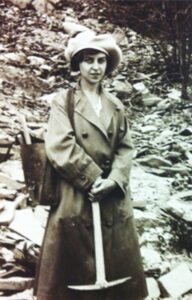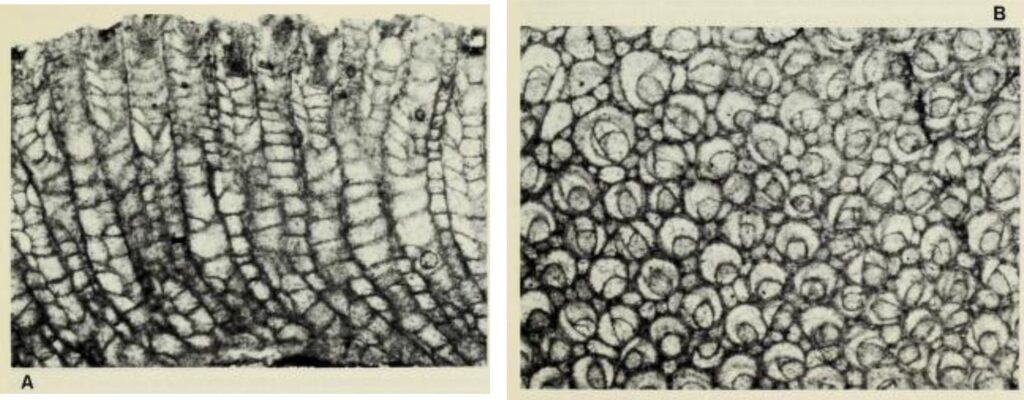
Image credit: History of Scientific Women.
This biography is part of the series Pioneering women in Earth Sciences – the link will take you to the main page.
Madeleine Fritz, a celebrated Canadian paleontologist, began her geological career with a fortuitous introduction to Alice Wilson in 1919. Wilson, another Canadian icon, was at that time an assistant paleontologist at the Geological Survey of Canada (GSC) and the only female to hold a position as ‘scientist’ in the GSC. GSC policy prevented women from accompanying male scientists into the field (a condition that wasn’t rectified until 1970). Wilson’s response was to organize her own field excursions, and in the summer of 1920 invited Fritz to join her expedition to Manitoba as “cook and canoeman” (quoted in History of Scientific Women). Fritz, having graduated from McGill University (Montreal) with a Bachelor of Arts degree, was teaching at a private girls’ school in Ottawa and had the summer off. In addition to her camp duties, Fritz became involved in fossil collecting and probably imbibed some of Wilson’s knowledge of stratigraphy. Whatever transpired during the excursion, something must have clicked because Fritz enrolled in the geology program at the University of Toronto in 1920. At the time she was the only woman in that cohort of geology students.
Madeleine Fritz gained an MA in geology in 1923, and by 1926 had her PhD – the first Canadian women to achieve this qualification in the geosciences. Her expertise was with fossil Bryozoa that are important components of many limestone successions. It is likely she was introduced to this fossil group during her inaugural field excursion with Alice Wilson. One of her mentors at Toronto, paleontologist William Arthur Parks encouraged Fritz to further develop this interest with a focus on Paleozoic faunas – she also worked with Parks as a post-graduate assistant (Fritz, 1971). She gained international respect and recognition for her expertise, publishing more than 70 papers.

In 1927 Fritz was offered an assistant paleontologist position at the Royal Ontario Museum (established in 1913 as part of the University of Toronto) where Parks was Director, an institution she was associated with until 1957 at which point she had been elevated to Associate Director. In 1935 she was appointed Assistant Professor of geology at the University of Toronto but had to wait 20 years to gain full professor status in 1956.
Fritz’ expertise was recognized by several institutions: in 1942 she became only the second woman to be accorded a Fellow of the Royal Society of Canada (first was Alice Wilson in 1938), and a Fellow of both the Geological Association of Canada and the Geological Society of America, and in 1967 the Centennial Medal of Canada.
All through retirement (from 1967) Fritz continued to publish her research and mentor students pursuing paleontological research. She also continued her advocacy for women in science as a member of the Confederation of University Women.

References and other documents
History of Scientific Women: Madeleine Fritz.
Madeleine Fritz, 1971. William Arthur Parks, Ph.D., LL.D., F.R.S., 1868-1936. Royal Ontario Museum Life Sciences, Miscellaneous Publications.
Madeleine Fritz, 1976. Redescription of Type Specimens of Species of the Bryozoan Genera Monticulipora, Mesotrypa, Peronopora, and Prasopora, from the Upper Ordovician rocks of Toronto and vicinity, Ontario, Canada. Royal Ontario Museum Life Sciences Contributions, No. 107.
John Monteith, 1993. Memorial to Madeleine Alberta Fritz 1896-1990. Geological Society of America (PDF).
Marianne Gosztonyi Ainley, 1995. Women’s work in geology: A historical perspective on gender division in Canadian science. Geoscience Canada, v. 21. (PDF)
Barbara Sherriff and Shelley Reuter, 1995. Notable Canadian women in the history of geology. Geoscience Canada, v. 21. (PDF)

















